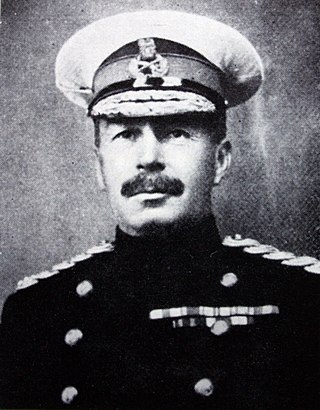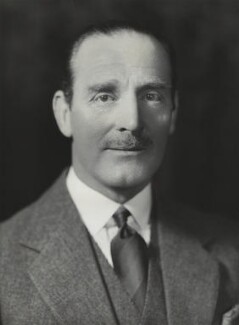United Kingdom

In the United Kingdom, commandant-general is a military appointment, not a rank. See the following for more details:
Commandant-general is a military rank in several countries and is generally equivalent to that of major-general.
Commandant general is the highest rank in the Argentine National Gendarmerie, and is held by the national director of the gendarmerie and his senior deputies. Depending on the appointment, it may be equal to any Argentine army rank from brigade general to the highest Argentine army rank, lieutenant general.
During the Irish Civil War of 1922–23, the Irregulars, or anti-Treaty IRA, applied this term to the leaders of their various brigades throughout the country. The term was acquired from the Boer ranks, through veterans of the Irish Transvaal Brigade.[ citation needed ]
In Italy Comandante generale (commandant general) is the title of the general officers commanding the Carabinieri , the Guardia di Finanza and the Corps of the Port Captaincies – Coast Guard . It is an appointment, not a rank. In Fascist Italy's Blackshirts, comandante generale was the title of their head and was held by Benito Mussolini from 1922 to 1943.
Historically, commandant-general (Portuguese : comandante-geral) has been the traditional title of the appointment of commanding officer in several security forces in Portugal and Brazil.
Presently, in Portugal is the title of the general officer commanding the National Republican Guard (GNR). In the past, it was also the title of the commanding officers of the Public Security Police, the former Fiscal Guard and the former Portuguese Legion.
In Brazil, it is the title of the commanding officers of the state military police and military fire departments.
Commandant-general was a military rank in South African Republic and the Orange Free State Republic as well as in the Union of South Africa and the Republic of South Africa. The commandant-general of one of the Boer republics was the head of its armed forces. The rank of full general in the South African Army was renamed "commandant-general" in 1956 and was in use until 1967 when it reverted simply to "general" [1]
Commandant-general was, at times, also a post designation, rather than a rank. Brigadier-General CF Beyers was the first Commandant-General of the Active Citizen Force [2] until he resigned in 1914. He was succeeded as Commandant-General by Major-General J C Smuts with effect from 16 September 1914. [3]

In the United Kingdom, commandant-general is a military appointment, not a rank. See the following for more details:
A general officer is an officer of high rank in the armies, and in some nations' air and space forces, marines or naval infantry.
Brigadier is a military rank, the seniority of which depends on the country. In some countries, it is a senior rank above colonel, equivalent to a brigadier general or commodore, typically commanding a brigade of several thousand soldiers. In other countries, it is a non-commissioned rank.
Second lieutenant is a junior commissioned officer military rank in many armed forces. The lowest officer rank, it is usually placed below lieutenant or first lieutenant.
Brigadier general or brigade general is a military rank used in many countries. The rank is usually above a colonel, and below a major general or divisional general. When appointed to a field command, a brigadier general is typically in command of a brigade consisting of around 4,000 troops.
Commander is a common naval officer rank as well as a job title in many armies. Commander is also used as a rank or title in other formal organizations, including several police forces. In several countries, this naval rank is termed as a frigate captain.
An inspector general is an investigative official in a civil or military organization. The plural of the term is "inspectors general".
Commandant is a title often given to the officer in charge of a military training establishment or academy. This usage is common in English-speaking nations. In some countries it may be a military or police rank. It is also often used to refer to the commander of a military prison or prison camp.
The South African National Defence Force's rank system is largely based on the British system, with the Air Force sharing the Army rank titles.

The Argentine National Gendarmerie is the national gendarmerie force and corps of border guards of the Argentine Republic. As at 2011, It has a strength of 30,000
An army corps general or corps general is a rank held by a general officer who commands an army corps. The rank originates from the French Revolutionary System, and is used by a number of countries. Normally, the rank is above the divisional general and below the army general, so it usually corresponds to the lieutenant general. However, in some countries such as Spain, Brazil, and Peru, the rank of army corps general is not used, in Spain the rank of army corps general is replaced by the rank of lieutenant general, while in some countries such as Brazil and Peru, the rank of army general is immediately above that of divisional general.

Major-General Sir Henry Timson Lukin was a South African military commander. He fought in the Anglo-Zulu War (1879) and the Basutoland Gun War (1880–1881), the Bechuanaland Campaign (1897), and the Anglo-Boer War when he was in command of the artillery during the defence of Wepener for which action he was awarded a Distinguished Service Order. From 1900 to 1901 he commanded the Cape Mounted Riflemen, from 1904 to 1912 he was Commandant-General of the Cape Colonial Forces and in 1912 Inspector-General of the Permanent Force of the Union of South Africa.
Divisional general is a general officer rank who commands an army division. The rank originates from the French Revolutionary System, and is used by a number of countries. The rank is above a brigade general, and normally below an army corps general.

Captain is the name most often given in English-speaking navies to the rank corresponding to command of the largest ships. The rank is equal to the army rank of colonel and air force rank of group captain.

Lieutenant-General Sir Thomas Ralph Eastwood, was a senior British Army officer who notably served as Governor of Gibraltar towards the end of the Second World War.
Commandant is a military rank used in many - typically Francophone or Hispanophone - countries, where it is usually equivalent to the rank of major.
General Sir George Alexander Weir was a British Army officer who served in the Second Boer War and the First World War.

Brigadier-General George Colborne Nugent, was a British Army officer who served on the staff during the Second Boer War, was closely involved in training the Territorial Force, and was killed in action in the Great War.
Major General Sir Richard Granville Hylton Howard-Vyse was a cavalry officer in the British Army.

The Commander-General of the Carabinieri is the head of the Carabinieri, the Italian Gendarmerie. He is usually chosen by decree of the president of the republic, nominated by the Minister of Defence (Italy), and with the approval of the Council of Ministers (Italy),